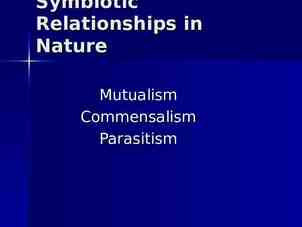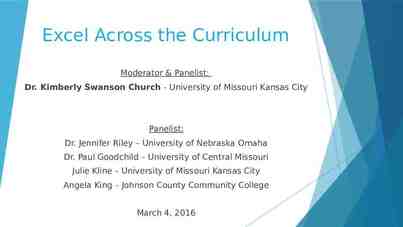Pandemic Preparedness Bureau of Workers’ Compensation PA Training
31 Slides945.86 KB
Pandemic Preparedness Bureau of Workers’ Compensation PA Training for Health & Safety (PATHS) Influenza: Protecting Your Employees PPT-130-01 1
Overview Seasonal Influenza Pandemic Flu History/Past Pandemics Treatment & Prevention Preparation/Personal Planning PPT-130-01 2
Seasonal Influenza Illness caused by the influenza virus Extremely contagious and spreads quickly to others. Symptoms vary from person to person Occurs every year, usually in the fall and winter killing 36,000 people in U.S. PPT-130-01 3
Cause The influenza virus, commonly known as the flu, is an infectious disease of birds and mammals caused by RNA viruses. Commonly confused with a cold, the flu is a much more severe disease and caused by a different virus. PPT-130-01 4
Infection The flu virus binds onto sugars on the surfaces of epithelial cells such as nose, throat, and lungs of mammals and intestines of birds. PPT-130-01 5
Symptoms & Diagnosis of Seasonal Flu Chills Body aches, especially throat and joints Coughing and sneezing Extreme fever Fatigue, headache, and nasal congestion Though similar symptoms occur with a cold, they are much more severe with the flu! PPT-130-01 6
Flu Virus DANGER OF INFECTION Infectious (Shedding Virus) Incubation Work, etc. Day 0 Day 2 Recovering Symptomatic (Sick) Work/Home/Hospital Back to work, etc Day 4 Day 11 PPT-130-01 Day 15 7
Flu Prevention Get the flu vaccine each year due to high mutation rate of the virus. Practice good hygiene and personal health habits. Cover your mouth when sneezing and wash your hands regularly as the virus spreads through aerosols. Stay at home when sick. PPT-130-01 8
Flu Treatment Bed rest Hydration-with eight ounces of fluid every hour Acetaminophen, ibuprofen, naproxen Avoid aspirin when dealing with children Since the flu is a virus, antibiotics won’t work unless there is a secondary bacterial infection. PPT-130-01 9
Medical Treatment Persistent fever Productive cough Increasing difficulty breathing Improvement, followed by relapse PPT-130-01 10
What is Pandemic Flu? Epidemic: serious outbreak in a single community, population or region Pandemic: an epidemic spreading around the world affecting hundreds of thousands of people, across many countries Pandemic flu: a pandemic that results from an influenza virus strain that humans have not been previously exposed to PPT-130-01 11
Pandemic Influenza A disease outbreak that spreads rapidly and affects many people world wide Characteristics - New virus that spreads easily as most people are susceptible (no natural resistance or immunity) - Effective human to human transmission is necessary - Measured by how fast the virus spreads - Wide geographic spread Not predictable Outbreaks lasting 8-12 weeks with 1-3 week wave cycles PPT-130-01 12
Pandemic Waves Pandemics occur in multiple waves of disease outbreaks The first wave in a local area is likely to last six to eight weeks The time between pandemic waves varies and can not be easily predicted. Anticipate 1-3 waves PPT-130-01 13
History Name of pandemic Date Deaths Asiatic Flu 1889-1890 1 million Spanish Flu 1918-1920 40 -100 million Asian Flu 1957-1958 1 - 1.5 million Hong Kong Flu 1968-1969 0.75 - 1 million Information taken from en.wikipedia.org/wiki/influenza PPT-130-01 14
Past Pandemics Occurs unpredictably, not always in winter Variations in: – Case fatality rates (number of people diagnosed with a disease that die from that disease) – Severity of illness – Pattern of illness (ages most severely affected) Rapid surge in number of cases over brief period of time Tend to occur in waves - May only be one wave PPT-130-01 15
Today vs 1918 Today Modern travel Many areas more densely populated Population exceeds 6 billion 1918 World War I (civilian and military overcrowding) Public information withheld Population approximately 1.8 billion PPT-130-01 16
Perspective 2001 terrorist attack with anthrax - killed five people 2002 outbreak of West Nile Virus - killed 284 people nationally in six months 2003 SARS outbreak - killed over 800 people world wide - froze Asian economies - frightened millions of people into wearing masks on the streets PPT-130-01 17
Becoming a Pandemic For pandemic influenza to occur, three conditions must be met: 1. A new virus which humans are not immune emerges 2. The virus causes severe human illness or death in humans 3. The virus spreads easily from person to person worldwide H5N1 has two of the three today. PPT-130-01 18
H5N1 Status Interpandemic Pandemic alert Pandemic Phase 1 Phase 2 Phase 3 Phase 4 Phase 5 Phase 6 No new virus in humans No new virus in humans New virus in humans Small clusters, localized Larger clusters, localized Animal viruses low risk to humans Animal viruses low risk to humans Little/no spread among humans Limited spread among humans Limited spread among humans Increased and sustained spread in general human population Current H5N1 status PPT-130-01 19
Expectations of Pandemics Crisis for extended period of time in multiple locations Daily routines will be affected from personal, community, and professional changes - Isolation/quarantine guidelines or requirements? - Cancellation of public events and schools? - Non-essential work activities limited? - Commerce Patterns changed? PPT-130-01 20
Expectations of Pandemics Elements of personal action will be required Absenteeism from pandemic flu expected to be 40-60% Lost availability for those who are ill (or caring for ill family) is projected at 2-4 weeks PPT-130-01 21
Pandemic Possibility World Health Organization assures us that there will be another influenza pandemic. Unknown when it will occur/how severe the next pandemic will be Unknown what the organism will be PPT-130-01 22
Vaccination? A vaccine to protect people from pandemic flu is not available now. A vaccine may not be available at the start of a flu pandemic ( 6-8 months after start). The best protection is to practice healthy hygiene to stay well now and during a flu pandemic. PPT-130-01 23
Medications During Pandemic Flu Antiviral Medications Can prevent complications if taken within first 48 hours of illness May not be effective against a pandemic flu virus Extremely limited supply now Would be prioritized Initial use probably only for treatment, not prophylaxis PPT-130-01 Antiviral Medications Amatadine (Symmetrel) Rimantadine (Flumadine) Zanamivir (Relenza) Oseltamivir (Tamiflu) 24
Pandemic Disruptions Significant disruption of infrastructure Transportation Schools Businesses Medical care Utilities Police and fire protection Communications Limited to no assistance from State and Federal Governments due to nation-wide impact PPT-130-01 25
Infection Control Hand Hygiene Wash hands regularly with soap & water If no water available: 60%-95% alcohol-based sanitizer Cover your cough strategy Environmental cleaning 1:10 bleach solution EPA registered disinfectant Gloves & surgical masks PPT-130-01 26
Personal Planning Stockpiling up to 30 days of water, food, supplies, medicines Social distancing Practice all the same behaviors to prevent seasonal flu Stay at Home Toolkits PPT-130-01 27
Preparedness Prepare yourself – disaster training & volunteerism. Remember to get enough sleep. Exercise regularly. Prevent the spread of infection – wash hands regularly, cough/sneeze into tissue, keep your hands away from your nose/mouth. Put out cigarettes. Annual flu shots. Nutritious eating. Family plan and kit. Look for information about pandemic flu. Utensils, food and beverages should not be shared. PPT-130-01 28
Contact Information Health & Safety Training Specialists 1171 South Cameron Street, Room 324 Harrisburg, PA 17104-2501 (717) 772-1635 [email protected] Like us on Facebook! https://www.facebook.com/BWCPATHS PPT-130-01 29
Questions PPT-130-01 30
Bibliography Influenza (flu), Mayo Clinic www.mayoclinic.org/diseases-conditions/flu/basics/definitions en.wikipedia.org/wiki/influenza PPT-130-01 31




































